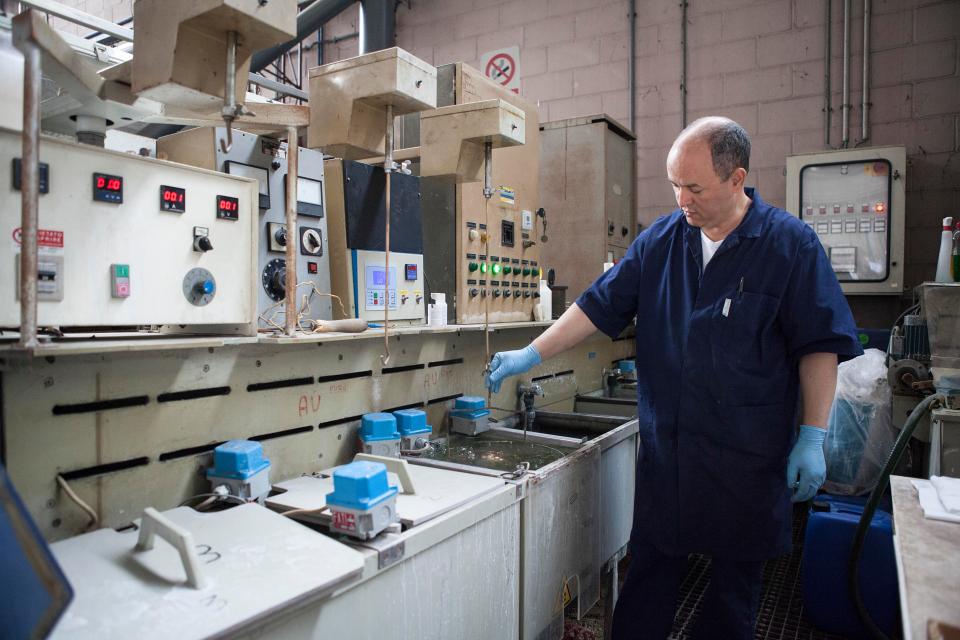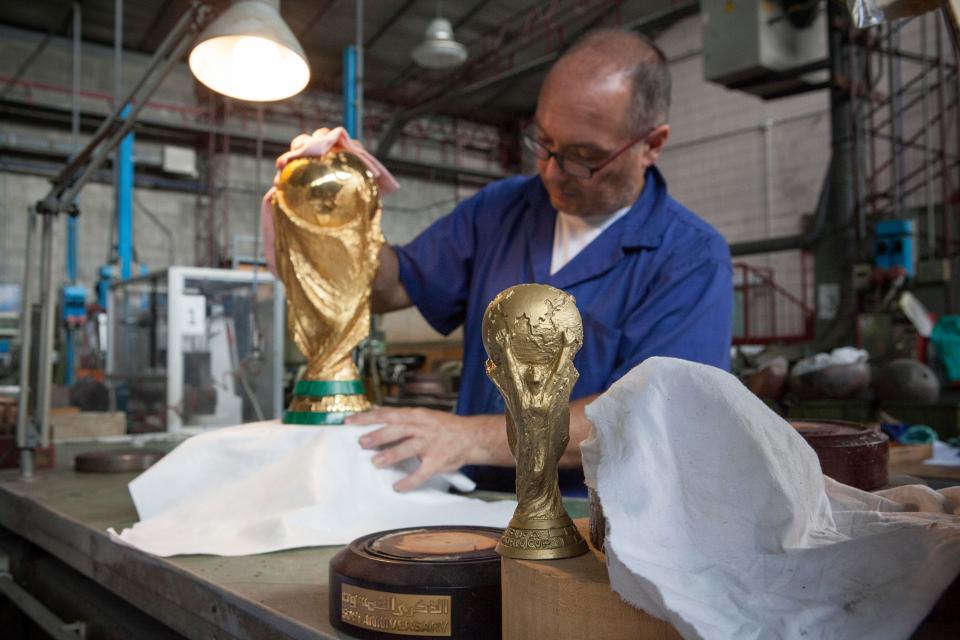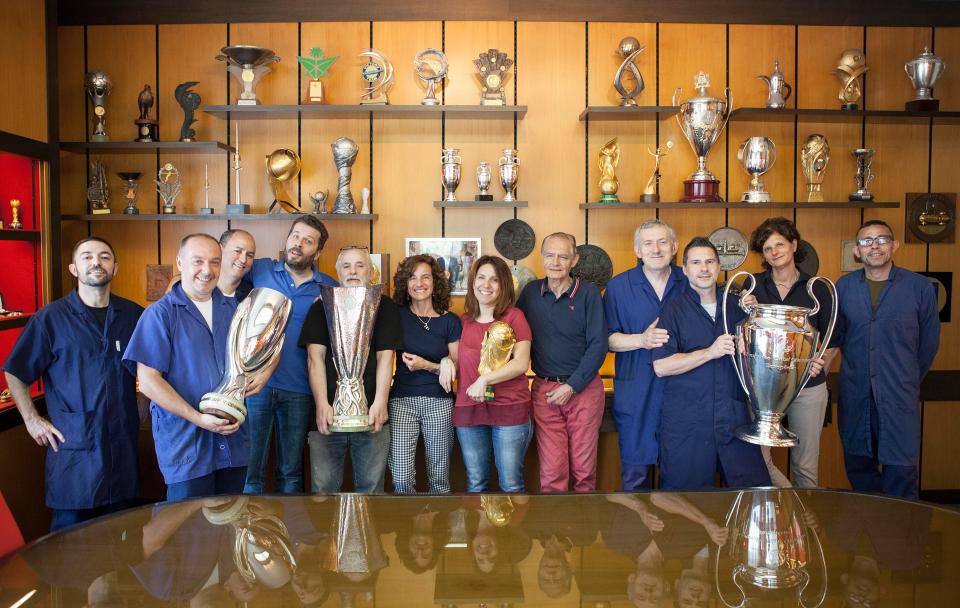How the World Cup trophy is made: Italian manufacturers GDE Bertoni are responsible for producing the prize for the greatest showpiece on earth

ITALY may not be at the World Cup this year, but you can guarantee an Italian has already had their hand on the trophy.
That's because the 18 carat gold prize is remade in Paderno Dugnano, a small town near Milan, at trophy and medal manufacturers GDE Bertoni.
Every four years, workers at the factory are tasked with creating a brass copy of the trophy that's given to the football federation of the winning team.
Standing some 36.8 centimetres high and weighing 6.1 kilograms, the original was designed by artist Silvio Gazzaniga in 1971, and presented at the 1974 World Cup to winners West Germany.
Owned by FIFA, the original trophy is handed out to the team wins the World Cup final, after it's engraved with the country's name on the trophy's base.
But then, following the trophy presentation, it's handed back to GDE Bertoni who have to restore it before returning it to FIFA, where it sits in their official museum before the next World Cup.
Latest World Cup news
Apparently, when players get their hands on it, all sorts of damage can be done when the trophy's passed around during celebrations. So that's why Bertoni have to preserve it.
But how do GDE Bertoni make the replica World Cup trophy?
First, the brass body is formed in the foundry. The metal is poured into a special container (which is the shape and design of the real World Cup) to produce a plaster cast.
Once that's done, it has to be chiselled by die grinders, which remove any excess metal.
Now, comes the human element. Manual chiselling with a small hammer is required to refine and complete the necessary details on the trophy - specifically on the two human figures holding up the world.
More refining is needed, so it's polished with heavy machinery to get it looking just perfect after that.
The trophy then reaches the galvanic department, who are responsible for ultrasonic cleaning and give it a degreasing bath.
That's a process that uses ultrasound and an appropriate solvent to ensure the trophy is cleaned properly and it also enhances the effect of the metal.
Next, the trophy is dipped into a gilding bath - gilding being a decorative technique for applying fine gold leaf or powder to solid surfaces.
Following that, it's washed in distilled water, which again gives it a gleaming shine.
Malachite green marble is applied to the base and the trophy is sprayed with a Zapon varnish, which ensures its preservation.
The trophy is dried, cleaned once again and inspected one final time before it's ready to be displayed come World Cup final day.
The whole scientific process from start-to-finish takes around three months.
As well as making the World Cup trophy, GDE Bertoni are also responsible for crafting the gold medals for the winners.
And they're a busy operation all-season long, having to produce other major trophies throughout the year.
They create replicas of the Champions League, Europa League and even the Supercup trophies
But it's when the World Cup comes around that GDE Bertoni are at their busiest.
Latest football features
The real World Cup trophy we see today was created for the 1974 World Cup in West Germany.
Gazzaniga beat off 53 submissions from other sculptors determined to win the commission.
The original is believed to be made of 75% gold and has been estimated to be worth around £10m.
Is it any wonder why FIFA keep it under lock and key in their World Football Museum in Zurich.























